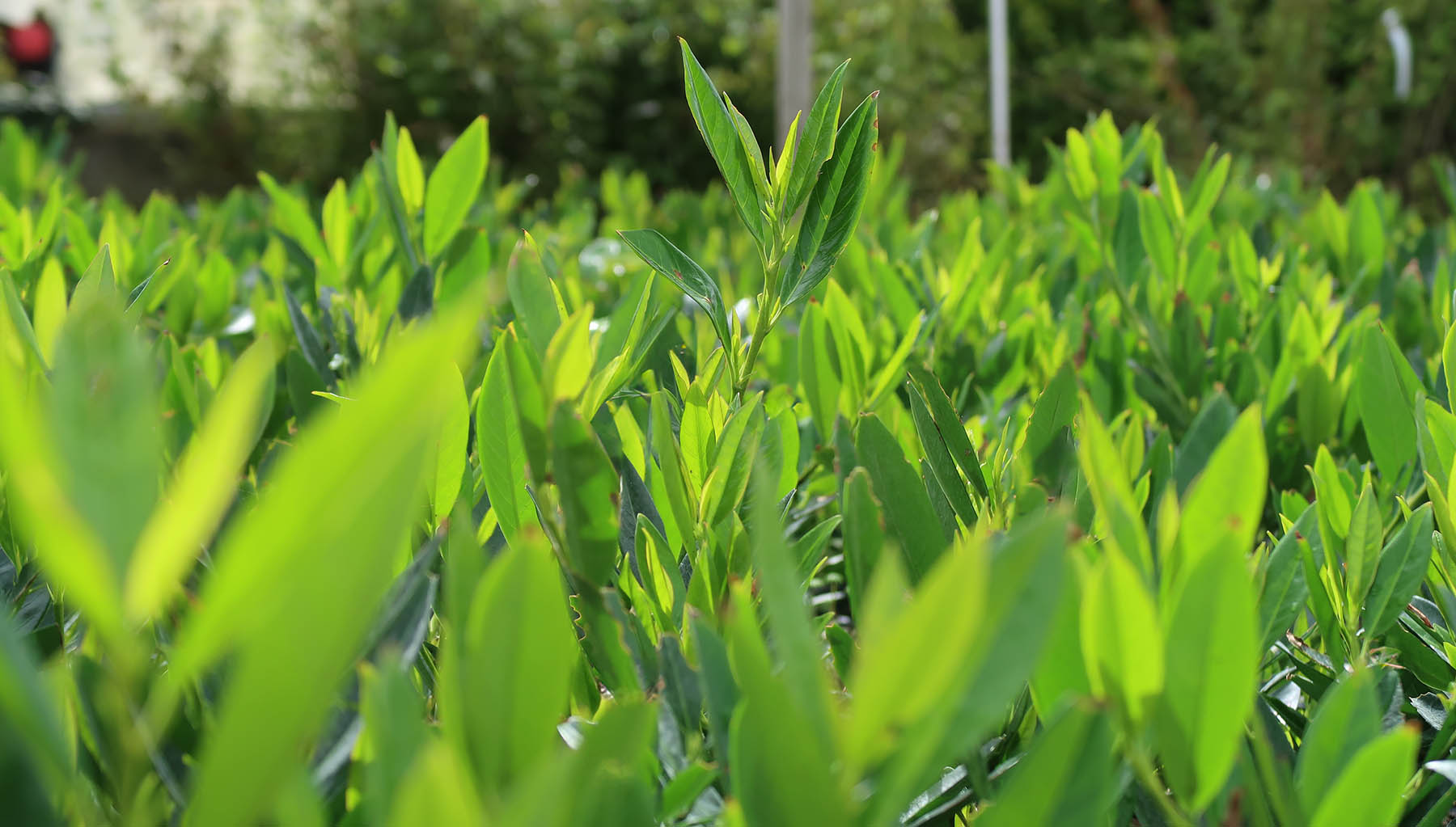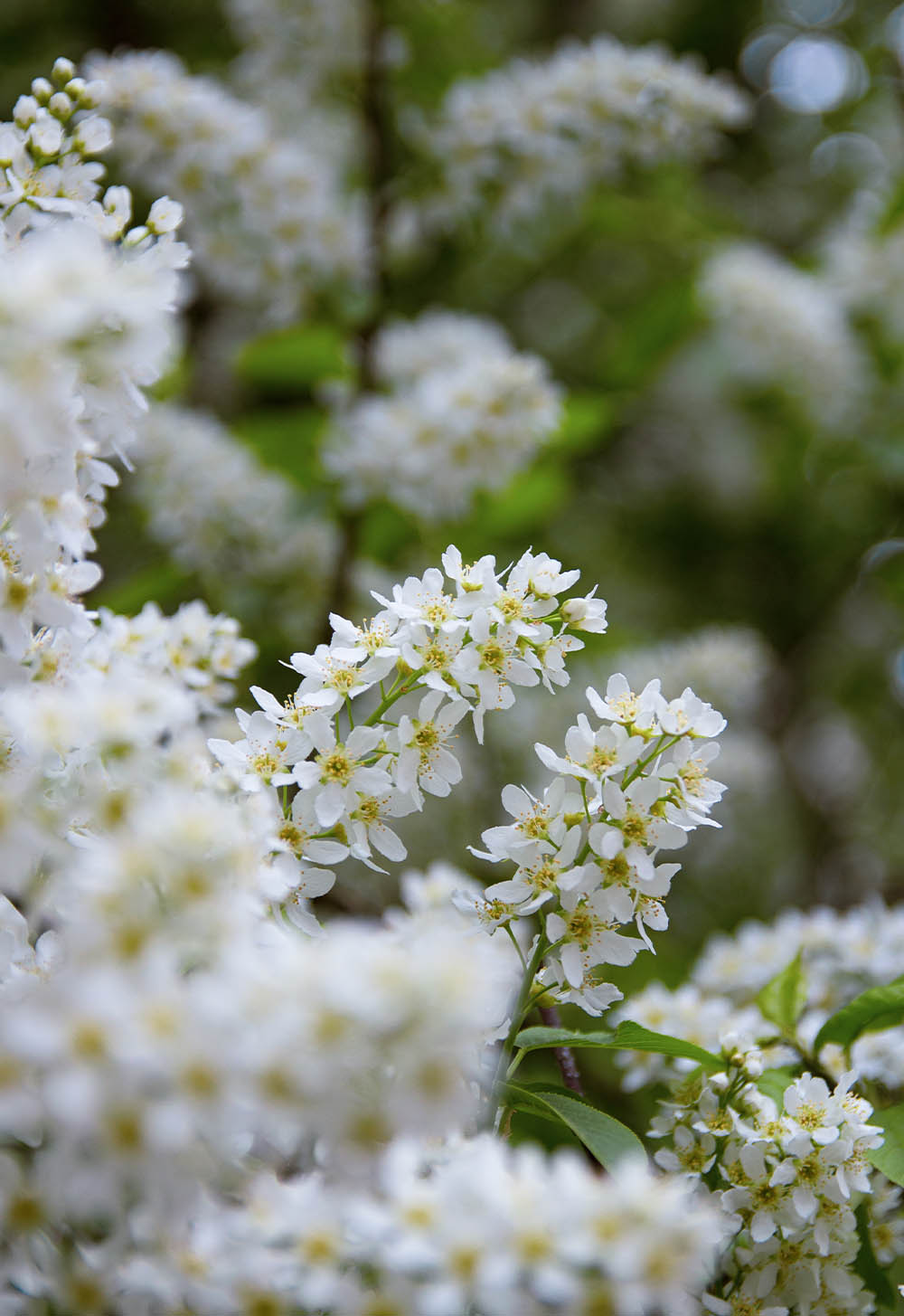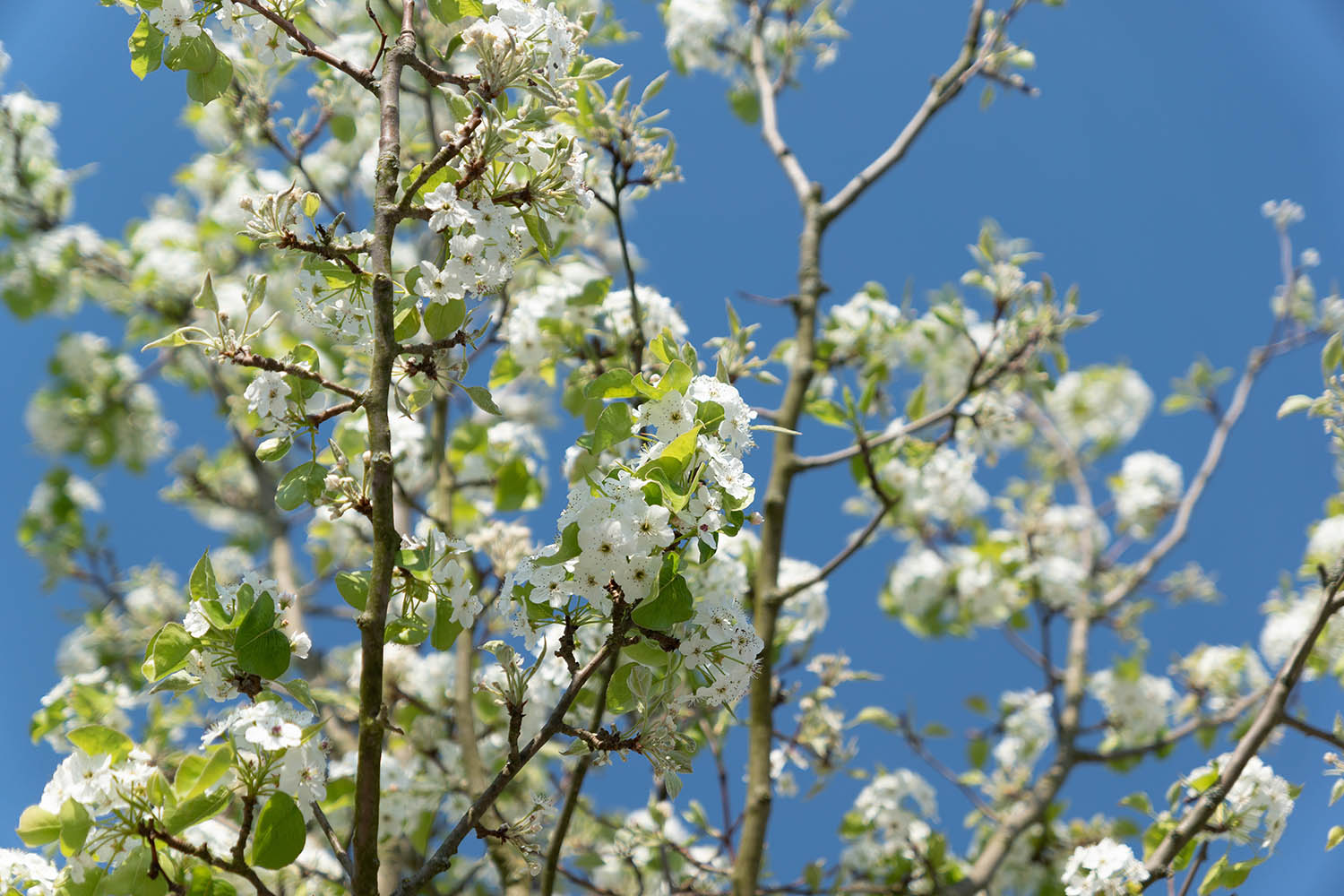Plant Focus: Prunus
A versatile genus of flowering trees and shrubs producing many edible fruits.
Prunus is a genus of plants that contains many different types of trees and shrubs, and has around 450 different species. The genus was originally native to North America, South America, and the paleotropics of Asia and Africa. Prunus trees were first brought to the UK during Roman times, when they introduced plums and cherries (from the Prunus varieties: Prunus domestica and Prunus avium), along with other fruits such as figs, grapes, pears, etc. Common varieties of Prunus you’ll find include: Prunus persica, Prunus armeniaca, Prunus domestica, Prunus avium, and Prunus serrulata.
Key Characteristics:
✓ Contains species of both shrubs and trees.
✓ Provides fruit called ‘drupes’, commonly known as ‘stone fruits’.
✓ Simple foliage – lanceolate, with toothed margins.
✓ Thrives in well cultivated soil.
✓ Low maintenance
✓ Attractive to wildlife
Prunus varieties can be deciduous or evergreen, often showcasing flowers and edible fruits. Prunus trees provide beauty and a pleasant aroma, adding interest to any green space. They are a popular choice in landscapes for ornamental, fruit-bearing, and shade-providing purposes. Prunus includes a large selection of fruits such as cherries, plums, apricots, peaches, nectarines, and even almonds. Prunus varieties are suitable for increasing biodiversity in any landscape, being particularly popular amongst birds. Prunus padus, also known as ‘Bird Cherry’, was even named as such due to its popularity with birds. is. Its reddish-black, bitter cherries are enjoyed by blackbirds, thrushes, and warblers to name a few. Insects such as caterpillars feed on the foliage of Prunus varieties, and their flowers provide a source of nectar and pollen for bees. Additionally, the fruits of Prunus plants are edible to humans, and are enjoyed by many different cultures all over the world.
Our favourite varieties of Prunus.

Prunus laurocerasus
Shrubs
Prunus laurocerasus ‘Otto Luyken’
A spreading, dense, low maintenance evergreen shrub with narrow, dark green, glossy leaves. Long spikes of small, fragrant, white flowers are produced in spring, followed by cherry-like red berries in autumn that ripen to black. Prunus laurocerasus ‘Otto Luyken’ forms an excellent compact low hedge and copes with coastal locations.
Prunus laurocerasus ‘Rotundifolia’
A vigorous, dense shrub with dark green, glossy leaves. Long spikes of small, scented white flowers are produced in spring, followed by cherry-like red berries that darken to black. A useful hedging variety and grows well under trees.
Prunus laurocerasus ‘Zabeliana’
A low growing shrub with narrow, dark green leaves. Bears upright spikes of white flowers in spring and sometimes autumn, followed by red berries that turn black as they mature. The horizontal form makes this Prunus useful as groundcover and it is also tolerant of salt spray.
Prunus lusitanica ‘Angustifolia’
Also known as Prunus lusitanica ‘Myrtifolia’. A dense, rounded shrub with glossy evergreen leaves. It has racemes of small white flowers in summer which are followed by purple berries.
Prunus spinosa
Blackthorn is an early flowering native hedgerow species that has dark green leaves and spiny branches. It bears white blossom in early spring and produces blue-black sloe berries in autumn.

Prunus laurocerasus ‘Otto Luyken’
Trees
Prunus avium
This medium sized deciduous tree has chestnut bark that takes on a silver hue as it matures. Clusters of pure white, cup-shaped flowers bloom in spring, and once these are pollinated, red-purple cherries appear in summer. Its toothed foliage emerges green and turns orange-red during autumn.
Prunus padus
A large deciduous tree with oval-shaped foliage which turn yellow in the autumn months. In spring, Prunus padus blooms nectar-rich, almond scented, hermaphrodite blossom and once pollinated by insects, these develop into red-black cherries, which are adored by birds.
Prunus serrulata ‘Sunset Boulevard’
A conical, narrow tree with a vase-shaped crown. Its foliage emerges copper, turns green in summer and finally transforms to orange-red in autumn, before it falls. In spring, Prunus serrulata ‘Sunset Boulevard’ blooms single white flowers with a pink tinge. Its narrow, conical shape makes it ideas as a street tree.
Prunus serrulata ‘Amanogawa’
A slow growing small tree or shrub with a columnar habit. From April it blooms semi-double, pale pink blossom and in autumn, its bronze-green foliage transitions to orange and red.
Prunus × subhirtella ‘Autumnalis’
A small, spreading tree with a vase-shaped crown and ovate leaves which are yellow in autumn. It has a long flowering season with semi-double, white flowers from autumn to early spring.

Prunus avium

Prunus serrulata ‘Sunset Boulevard’
How to grow and care for Prunus
Prunus thrives in most well-cultivated soil types, particularly chalky and alkaline soils. The exception being highly acidic or waterlogged conditions, where it may struggle.
For early flowering varieties, plant them in a sheltered location to protect the flowers from spring winds and late frosts. Later flowering varieties make excellent specimen trees, and they can be grown individually in lawns, or alongside other trees and shrubs. While most thrive in open, sunny areas, they generally tolerate some light shade; however, the evergreen varieties can tolerate dense shade.
Fun Fact
The cherry blossom (Prunus serrulata) is an iconic symbol of Japan, representing the sign of spring, and of renewal and new life.
Several Prunus species as shrubs are ideal for forming a hedge due to their dense foliage, which provides privacy and creates a barrier. Plant them in a row, and regularly trim them, and these Prunus varieties will be shaped into a neat and uniform hedge. Examples include Prunus laurocerasus, Prunus spinosa, and Prunus lusitanica. These should be planted around 50cm apart, or for a denser hedge you may want to plant them closer together. It is essential to consider the mature size of the specific species you have chosen to form a hedge, in order to allow enough room for them to grow.
Bare-root trees are best planted from November to March, while container grown trees can be planted at any time of the year, although it’s advisable to avoid winter if possible. Prunus trees, once planted and fully established, require minimal maintenance. It is best not to prune Prunus trees at all, but if needed, prune it while the tree is growing, between May and August, to prevent problems such as silver leaf diseases.
Pests and diseases that affect this species
While Prunus species are hardy and resilient, they still can be affected by various issues. The main diseases that affect Prunus are bacterial canker, leaf spot, and powdery mildew.
Bacterial canker is where two bacteria infect the stems and leaves of Prunus domestica (plum), Prunus avium (cherry), and similar Prunus species such as Prunus persica (peach), and Prunus armeniaca (apricot). Signs of bacterial canker include cankers on the bark or branches and stems, oozing of sap from the cankers especially during warm and humid weather, dieback of branches and shoots, and discolouration/darkening of leaves, etc. To treat bacterial canker, during dry weather, prune the infected branches at least 12 inches below the cankers. Dispose or burn these to stop them spreading further. It is best to avoid pruning the trees during wet periods as this could spread the disease. If this isn’t enough, you can use a copper spray, although it’s important to note that certain strains of bacteria are resistant to these. organic fungicide can also be used to treat a bacterial canker infection. An example of this isa fungicide that contains phosphorous acid, as this is an effective and environmentally friendly approach to managing the infection.
Leaf spot is a fungal disease that affects the foliage of Prunus, where small, dark spots appear on the leaves. Alternatively, leaves may show a patchy, yellowed appearance and drop prematurely. To treat leaf spot, trim off the affected leaves. Avoid heavy pruning as this can stress the plants and worsen the problem. You can also spray the Prunus with a fungicide to treat fungal leaf spot, but this will only be effective if you catch the infection quick enough.
Powdery mildew is a fungal disease that appears as a powdery white substance on the surface of leaves, shoots, and sometimes even fruit. This fungal growth is caused by various species of powdery mildew fungi, which thrive in warm, humid conditions. To treat powdery mildew, remove all of the infected leaves and fruit, and destroy them. Throw them away or burn them, to ensure the infection doesn’t spread any further.
For more information on Prunus varieties Greenwood grows and supplies, speak to the G Team today.

